
Milkweed - A Fungal Perspective
Block title
 By: Lorinda BullingtonEcologist and Bioinformatics Analyst
By: Lorinda BullingtonEcologist and Bioinformatics Analyst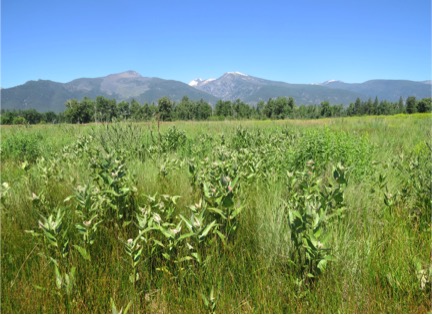
Showy milkweed (Asclepias speciosa, above) provides important resources for western monarchs in the U.S. Milkweed's toxic properties deter most herbivores, but monarch butterflies lay their eggs on milkweed plants where the larvae then mature and feed on foliar tissues.
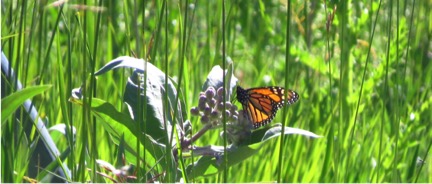
The larvae slowly build a tolerance to milkweed's toxins and become toxic themselves, which helps protect them from predators.
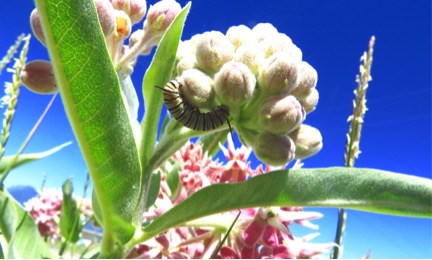
Microscopic organisms also inhabit milkweed. Vast communities of fungi persist inside these plants, invisible to the naked eye and may influence milkweed ecology, including stress tolerance, herbivory and defense against disease.
To observe traits of fungi found in milkweed plants from different populations, we collected milkweed tissues at 18 sites from Washington to Minnesota. Under the microscope we observed dense root colonization by arbuscular mycorrhizal fungi (AMF, photo below).
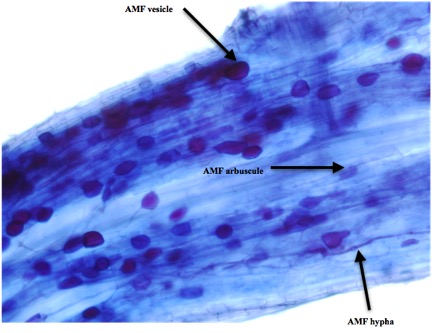
Milkweed is dependent on AMF, so much so that one third of all plants died when grown without AMF in a recent greenhouse experiment (Waller and Lekberg, in preparation). Plants that survived were stunted, likely due to severe phosphorus limitations, whereas plants grown with AMF were twice as large.
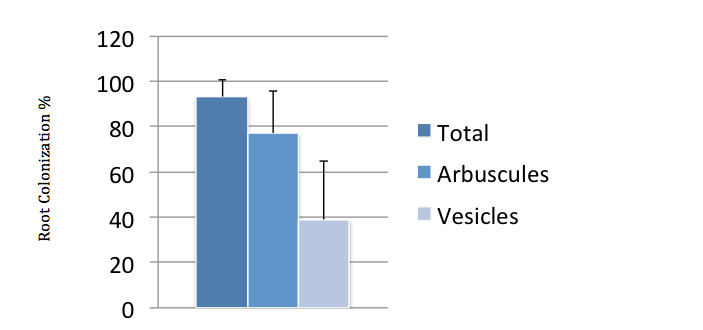
Almost all root segments surveyed were colonized by AMF, which is unusual as root colonization of most plants is usually <50%.
To observe fungal colonization of foliar tissues, we placed centimeter wide discs of leaf tissue on nutrient media. Many fungi grew out of the milkweed leaf discs (photo below). We isolated each new growth on individual culture plates for future study.
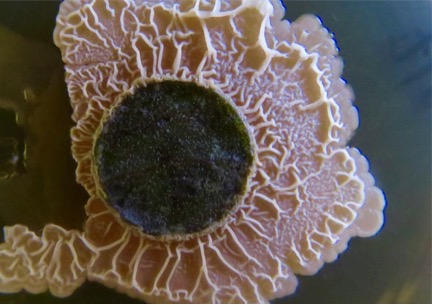
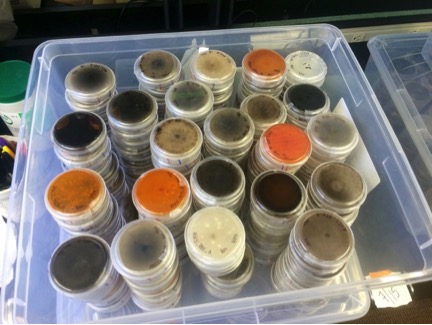
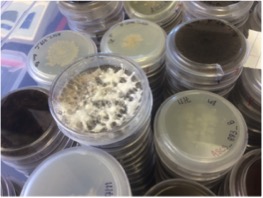
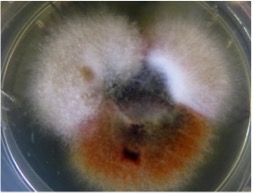
Pigmentation of many of our isolates differs along a longitudinal gradient. Isolates in the west show darker pigmentation and those in the midwest shower a lighter pigmentation (photo below). Sequence data will tell us how closely related these isolates are to each other and help us determine the types of compounds being produced.
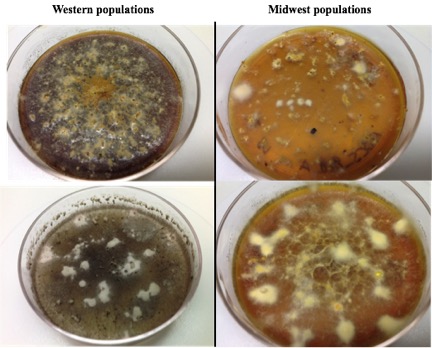

About the AuthorLorinda Bullington
Lorinda is currently a Ph. D. student at the University of Montana, studying systems ecology. She also has a master’s degree in molecular ecology, a B.S. degree in microbiology, and a certificate in bioinformatics. Her research investigates how plant-associated microbial communities (plant microbiomes), influence plant growth, defensive chemistry, disease, and nutrient cycling. Lorinda comes from three generations of small-scale Montana loggers and is particularly interested in microbial communities in forest ecosystems. She has published research on fungi associated with native white pines and their influence on tree defensive chemistry and the invasive pathogen Cronartium ribicola, which causes white pine blister rust disease. She also works in collaboration with others at UM studying the influence of bark beetle infestations on fungal decomposer communities, with implications on nutrient turnover and carbon sequestration in forests.
In addition to her own research, Lorinda often assists other researchers in bioinformatics analyses and is currently working on multiple diet-barcoding studies to better understand food web ecology and dynamics across the landscape. For a complete list of Lorinda’s publications, click here.
Lorinda is currently a Ph. D. student at the University of Montana, studying systems ecology. She also has a master’s degree in molecular ecology, a B.S. degree in microbiology, and a certificate in bioinformatics. Her research investigates how plant-associated microbial communities (plant microbiomes), influence plant growth, defensive chemistry, disease, and nutrient cycling. Lorinda comes from three generations of small-scale Montana loggers and is particularly interested in microbial communities in forest ecosystems. She has published research on fungi associated with native white pines and their influence on tree defensive chemistry and the invasive pathogen Cronartium ribicola, which causes white pine blister rust disease. She also works in collaboration with others at UM studying the influence of bark beetle infestations on fungal decomposer communities, with implications on nutrient turnover and carbon sequestration in forests.
In addition to her own research, Lorinda often assists other researchers in bioinformatics analyses and is currently working on multiple diet-barcoding studies to better understand food web ecology and dynamics across the landscape. For a complete list of Lorinda’s publications, click here.



















